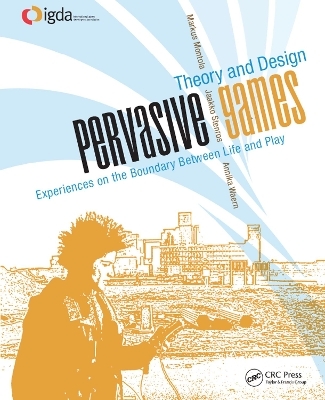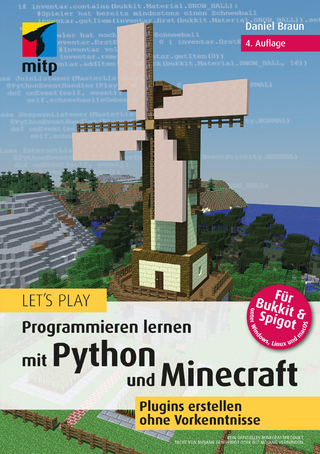
Pervasive Games
Focal Press US (Verlag)
978-0-12-374853-9 (ISBN)
Quickly emerging from the fast-paced growth of mobile communications and wireless technologies, pervasive games take gaming away from the computer screen and back to the three-dimensional world. Now games can be designed to be played in public spaces like shopping malls, conferences, museums and other non-traditional game venues. Game designers need to understand how to use the world as a gamespace-and both the challenges and advantages of doing so.
This book shows how to change the face of play-who plays, when and where they play and what that play means to all involved. The authors explore aspects of pervasive games that concern game designers: what makes these games compelling, what makes them possible today and how they are made. For game researchers, it provides a solid theoretical, philosophical and aesthetic understanding of the genre.
Pervasive Games covers everything from theory and design to history and marketing.
Markus Montola (M.Soc.Sc.) is a grant researcher in the University of Tampere Gamelab research group and a doctoral candidate in Literature and the Arts. Before being given a three-year dissertation grant by the Finnish Cultural Foundation, he worked as a project researcher and manager in the Gamelab, since the year 2004. His dissertation work discusses various forms of role-playing and pervasive gaming. He has already edited two books on role-playing with Jaakko Stenros (Playground Worlds, 2008, and Beyond Role and Play, 2004) and works in the board of the upcoming International Journal on Role-Playing. He has published about a dozen book chapters and conference papers on Pervasive Games and is a known expert on the topic of pervasive games.The most significant award given to Markus Montola is the three-year research grant from the Finnish Cultural Foundation: Only 1-2 are given to each broad field annually. Stenros is currently a researcher at the Game Reserch Lab at the University of Tampere. Stenros is one of the key people in the Nordic role-playing movement. He has written extensively on role-playing games, both in and out of academia, has edited two books with Markus Montola on role-playing games and has published numerous papers and reports on pervasive games. Before returning to academia in 2006 Stenros made a career as a trainer and customer support manager in data security company F-Secure.Stenros has the unique combination of skills required to tackle the cultural contexts that pervasive games tap into: Having worked as a journalist and a critic he has an extensive understanding of popular culture; his background in sociology helps ground the observations, and his understanding of the unique Nordic live action role-playing scene has been instrumental in approaching pervasive games.
Pervasive Games - Table of ContentsThe book is divided in three parts: 1) Theory, looks at the concepts and history of pervasive gaming. 2) Design, is a practical part giving guidance for practical work with pervasive games. 3) Society, looks beyond pervasive games, discussing their cultural and societal relevance in a larger context. Foreword: written by a KEY person within game research community and industry. Possible contributors include Eric Zimmerman, Sean Stewart, Tracy Fullerton, Greg Costikyan and Jessica Mulligan.Introduction: Explanation why pervasive games are interesting. Our position as ludologists. Basic terminology. Instructions on how to use the book. Part I: TheoryCase Study A: Killer: The Game of AssassinationBy Markus Montola & Jaakko Stenros. Killer is an extremely simple and compelling pervasive game that has spread to countless campuses since the 60?s. It is discussed as the first case example, since the simple game demonstrates pervasive gameplay in an understandable fashion. Killer displays all forms of pervasivity discussed in Chapter 1, including spatial, temporal and social expansions. 1 Games and Pervasive Games: There have been many definitions for pervasive games, and many names for this style of gaming. In this book we use a model based on magic circle discussed by Katie Salen and Eric Zimmerman; they discuss invasive games that penetrate the boundary of artificiality surrounding games. A model of three expansions is presented for analyzin the ways spatial, temporal and social boundaries of gameplay can be blurred. Pervasive games bring pleasure of game to everyday life and spice the game with unmitigated tangibility of the ordinary world.Case Study B: The Beast: The boom of alternate reality gaming started from an advertising
| Erscheint lt. Verlag | 22.7.2009 |
|---|---|
| Verlagsort | Burlington |
| Sprache | englisch |
| Maße | 191 x 235 mm |
| Gewicht | 589 g |
| Themenwelt | Informatik ► Software Entwicklung ► Spieleprogrammierung |
| ISBN-10 | 0-12-374853-4 / 0123748534 |
| ISBN-13 | 978-0-12-374853-9 / 9780123748539 |
| Zustand | Neuware |
| Haben Sie eine Frage zum Produkt? |
aus dem Bereich


